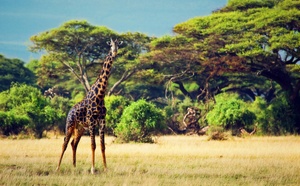The Choranche main cave was found back in 1871. In 1891, its sister, theCouffin's grotto, was brought to the public's attention.
Back in time, there was a thermal station in a village called Choranche-les-Bains. Clients were sent to the grotto to enhance their stay at the spa.
In 1965, The father of the current cave owner, Laurent Garnier, heard about the farmer's wish to sell the land around the cave.
With three friends, Laurent Garniers bought the 50ha of land and became the owner of an underground network.
Choranche has belonged to the same family ever since.
In 1966, 599 tourists came to visit. In 2014 they were 100 000 and they generated one million euros of sales revenues !
Back in time, there was a thermal station in a village called Choranche-les-Bains. Clients were sent to the grotto to enhance their stay at the spa.
In 1965, The father of the current cave owner, Laurent Garnier, heard about the farmer's wish to sell the land around the cave.
With three friends, Laurent Garniers bought the 50ha of land and became the owner of an underground network.
Choranche has belonged to the same family ever since.
In 1966, 599 tourists came to visit. In 2014 they were 100 000 and they generated one million euros of sales revenues !
Eymards and Ture's caves
Autres articles
-
 Massif du Vercors : ski de fond, ski nordique, rando et vélo au programme !
Massif du Vercors : ski de fond, ski nordique, rando et vélo au programme !
-
 Vercors : ouverture des domaines nordiques et des pistes de luge
Vercors : ouverture des domaines nordiques et des pistes de luge
-
 Vercors sud : un séjour pour faire le plein d'activités nature !
Vercors sud : un séjour pour faire le plein d'activités nature !
-
 Le Vercors rallume l’étincelle olympique à l’occasion du 50e anniversaire des JO de Grenoble
Le Vercors rallume l’étincelle olympique à l’occasion du 50e anniversaire des JO de Grenoble
-
 Vercors : Saint-Antoine-l’Abbaye et le pays des Antonins
Vercors : Saint-Antoine-l’Abbaye et le pays des Antonins
The Eymards grotto, in Lans-en-Vercors was found in 1945, because of blastings.
This cave initiated many Isère speleologists. It features a complete underground itinerary: a pit (with a 28m drop), a maze, escalations, a tiny river, concretions, protruding walls…
Shaped by a tectonic gap and only powered by infiltrations, the grotto fills little by little due to stone disintegration.
Access to the cave is permitted by the land's owner.
In Autrans, the Ture's grotto has been known by the inhabitants since the begining of the XXth century.
This grotto allows an easy intitiation to a fantastic underworld exploration.
Back in time, water would run under the Autrans village and would come out near la Goule Noire, in the Bourne canyon.
Nowadays, Ture's grotto displays stalagmites and stalagtites formations watered by rain. Wider than high, the cave has only one entrance. However air circulates freely.
During winter, cold air comes from outside and moves in the vast room at the entrance. It warms up in contact with the ground before it exits touching the ceiling of the cave.
Many bats species can be found in this grotto.
This cave initiated many Isère speleologists. It features a complete underground itinerary: a pit (with a 28m drop), a maze, escalations, a tiny river, concretions, protruding walls…
Shaped by a tectonic gap and only powered by infiltrations, the grotto fills little by little due to stone disintegration.
Access to the cave is permitted by the land's owner.
In Autrans, the Ture's grotto has been known by the inhabitants since the begining of the XXth century.
This grotto allows an easy intitiation to a fantastic underworld exploration.
Back in time, water would run under the Autrans village and would come out near la Goule Noire, in the Bourne canyon.
Nowadays, Ture's grotto displays stalagmites and stalagtites formations watered by rain. Wider than high, the cave has only one entrance. However air circulates freely.
During winter, cold air comes from outside and moves in the vast room at the entrance. It warms up in contact with the ground before it exits touching the ceiling of the cave.
Many bats species can be found in this grotto.
Bournillon, Ferrières, Ours...
The Chimney grotto (in Saint-Julien-en-Vercors) was found in 1893, then exploited in 1900 by Oscar Decombaz.
This grotto « between shadow and light » is ideal for a first underground experience. Its hectic itinerary is embellished with pretty stalagmites formations, a large hole in the ceiling and a tiny temporary underground lake the experience.
Deer antlers dated from Neolitic era were found in the grotto.
The Bournillon's cave (Chatelus) is a major geological phenomenon in Vercors due to its size (one of the biggest porches in Europe) and to the amount of water it collects ( 3d emergence in France for its flow).
Many activities can be found on the site (climbing, base jump ...).
Speleological activity is under supervision to preserve bats' inhabitat and life on the site.
The Ferrières' cave (in La Chapelle-en-Vercors), was first mentionned in 1882. Alfred-Edouard Martel writes about it in 1897.
It presents classical stalactites and stalagmites concretions.
Speleologists consider the visit to be easy. No specific technical skill is required, but the basics in rock climbing.
The Ours' grotto (in La Chapelle-en-Vercors) is a cave featuring wide and narrow galleries.
This grotto displays beautiful underground landscapes, perfect to initiate visitors to cave exploration.
The cave's first 80 meters are popular as it hosted a bear and later resistants during WWII.
In 1967 and in 1968, Spéléo Valentinois (GSV) Group enlarges the cave's narrow tail. They discover additional 400m galleires with pretty calcifications. The visit requires no specific skill.
This grotto « between shadow and light » is ideal for a first underground experience. Its hectic itinerary is embellished with pretty stalagmites formations, a large hole in the ceiling and a tiny temporary underground lake the experience.
Deer antlers dated from Neolitic era were found in the grotto.
The Bournillon's cave (Chatelus) is a major geological phenomenon in Vercors due to its size (one of the biggest porches in Europe) and to the amount of water it collects ( 3d emergence in France for its flow).
Many activities can be found on the site (climbing, base jump ...).
Speleological activity is under supervision to preserve bats' inhabitat and life on the site.
The Ferrières' cave (in La Chapelle-en-Vercors), was first mentionned in 1882. Alfred-Edouard Martel writes about it in 1897.
It presents classical stalactites and stalagmites concretions.
Speleologists consider the visit to be easy. No specific technical skill is required, but the basics in rock climbing.
The Ours' grotto (in La Chapelle-en-Vercors) is a cave featuring wide and narrow galleries.
This grotto displays beautiful underground landscapes, perfect to initiate visitors to cave exploration.
The cave's first 80 meters are popular as it hosted a bear and later resistants during WWII.
In 1967 and in 1968, Spéléo Valentinois (GSV) Group enlarges the cave's narrow tail. They discover additional 400m galleires with pretty calcifications. The visit requires no specific skill.
Other caves of interest in the Vercors region…
- Enjoy Furon's underground freshness in Sassenage caves.
- Admire the maze of red and black concretions in Thaïs grotto's and a reproduction of a Preshistoric inhabitat.
- The Draye Blanche's cave : At La Chapelle-en-Vercors, the Draye Blanche grotto is a gigantic cave with thousands of stalactites.
- Luire's cave is a huge grotto. Night visits with toches can be arranged for visitors as well as sport explorations.
Two addresses to remember : vercors-aventure.com and speleo-canyon.com
- Admire the maze of red and black concretions in Thaïs grotto's and a reproduction of a Preshistoric inhabitat.
- The Draye Blanche's cave : At La Chapelle-en-Vercors, the Draye Blanche grotto is a gigantic cave with thousands of stalactites.
- Luire's cave is a huge grotto. Night visits with toches can be arranged for visitors as well as sport explorations.
Two addresses to remember : vercors-aventure.com and speleo-canyon.com






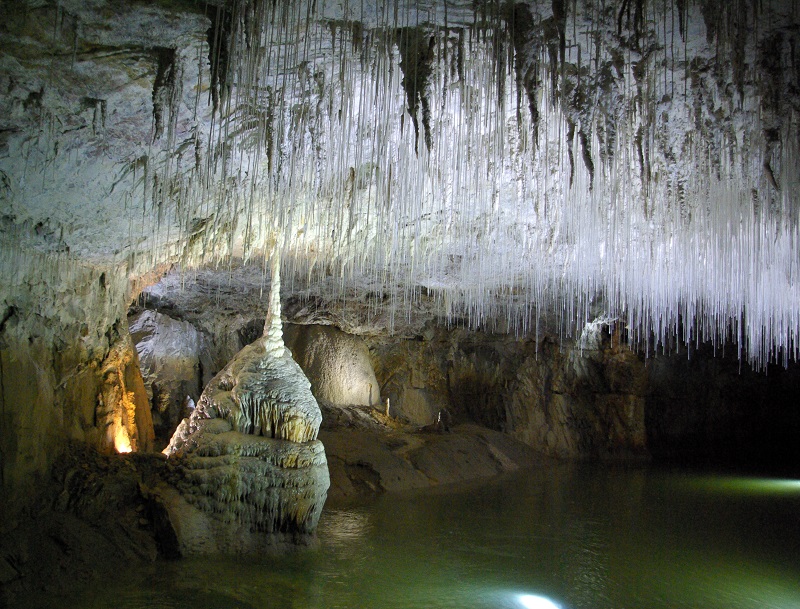
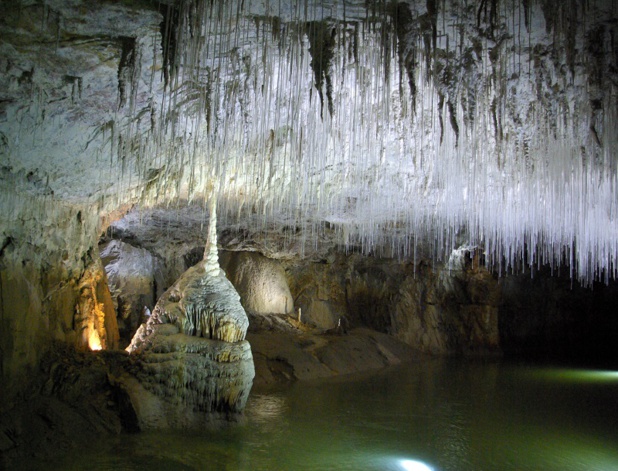











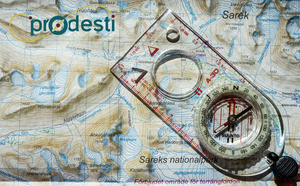






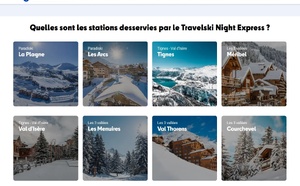



![Tourisme : où sont passés les Chinois ? [ABO] Tourisme : où sont passés les Chinois ? [ABO]](https://www.tourmag.com/photo/art/large_16_9/87929923-62307593.jpg?v=1744721842)
